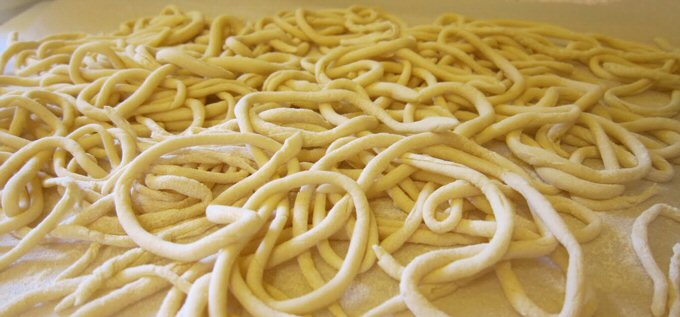Flour, water and salt: the art of making Pici pasta

Pici are a long, thin and irregular spaghetti made by hand. With the exclusion of eggs, they were the “poor” everyday pasta of the Sienese countryside, while the mixture with eggs was the “rich” pasta for Sunday.
They are certainly ancient in origin. Some actually think they were of Etruscan origin. If it is true that the tray, held by a slave depicted in a tomb in Tarquinia, really contains “pici”, then they would have originated before Marco Polo and Chinese spaghetti.
To prepare them you only need flour, water and salt, ingredients readily available for everybody. It is only in recent times, to make the mixture more consistent and stronger, that egg is added but always in very small quantities in proportion to the mixture. Once the mixture has been prepared, neither too compact nor too soft, strips of pasta are cut and it begins to become sticky. The “pici” are spread out by hand, one by one, on a wooden pastry board and, to prevent them from sticking, they are dusted with maize flour. The cooking lasts a few minutes. The traditional accompaniment for the “pici” in Celle sul Rigo is a wild garlic sauce, a piquant but simple and tasty sauce made of olive oil, garlic, peperoncino and a little tomato paste.
-
Il Poggio Agricultural Company The Il Poggio Farm has approximately 100 hectares at its disposal. This land includes Mannella, Bandite...
-
Consorzio Agrario di Siena The Consorzio Agrario di Siena promotes and sells retail foodstuffs and household products, with a wide...
-
Grocery Store Gigliola Gigliola has been working here for over 25 years, always carefully selecting high-qualitylocal food products...